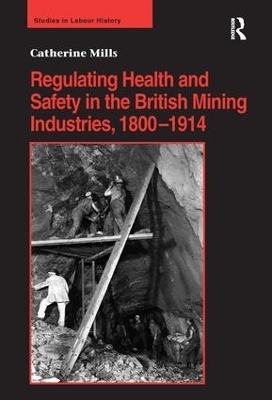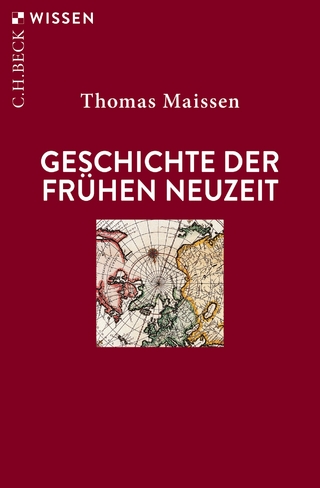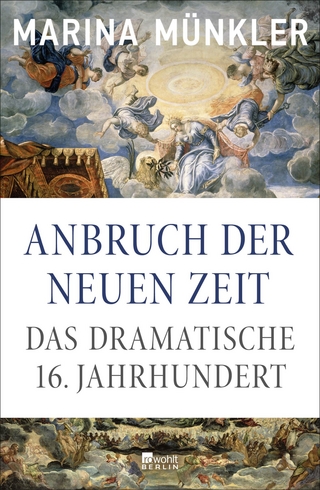
Regulating Health and Safety in the British Mining Industries, 1800–1914
Seiten
2010
Routledge (Verlag)
978-0-7546-6087-3 (ISBN)
Routledge (Verlag)
978-0-7546-6087-3 (ISBN)
This book explores the emergence and growth of state responsibility for safer and healthier working practices in British mining and the responses of labour and industry to expanding regulation and control. As such it will be valuable to all those with an interest in medical history, occupational health, legal history, and the social history of work in the nineteenth century.
This book explores the emergence and growth of state responsibility for safer and healthier working practices in British mining and the responses of labour and industry to expanding regulation and control. It begins with an assessment of working practice in the coal and metalliferous mining industries at the dawn of the nineteenth century and the hazards involved for the miners, before charting the rise of reforming interest in these industries. The 1850 Act for the Inspection of Coal Mines in Great Britain brought tighter legislation in coal mining, yet the metalliferous miners continued to work without government-regulated safety and health controls until the early 1870s. The author explores the reasons for this, taking into account socio-economic, environmental, medical, technical, and cultural factors that determined the chronology and nature of early reform. The comparative approach between the coal and metalliferous mining sectors provides a useful model for exploring the significance of organized labour in gaining health and safety concessions, particularly as the miners in the metalliferous sector, in contrast to the colliers who unionised early, placed a high value on independence and self-sufficiency in the workplace. As an investigation into the formation of health and safety legislation in a major industry, this work will be valuable to all those with an interest in medical history, occupational health, legal history, and the social history of work in the nineteenth century.
This book explores the emergence and growth of state responsibility for safer and healthier working practices in British mining and the responses of labour and industry to expanding regulation and control. It begins with an assessment of working practice in the coal and metalliferous mining industries at the dawn of the nineteenth century and the hazards involved for the miners, before charting the rise of reforming interest in these industries. The 1850 Act for the Inspection of Coal Mines in Great Britain brought tighter legislation in coal mining, yet the metalliferous miners continued to work without government-regulated safety and health controls until the early 1870s. The author explores the reasons for this, taking into account socio-economic, environmental, medical, technical, and cultural factors that determined the chronology and nature of early reform. The comparative approach between the coal and metalliferous mining sectors provides a useful model for exploring the significance of organized labour in gaining health and safety concessions, particularly as the miners in the metalliferous sector, in contrast to the colliers who unionised early, placed a high value on independence and self-sufficiency in the workplace. As an investigation into the formation of health and safety legislation in a major industry, this work will be valuable to all those with an interest in medical history, occupational health, legal history, and the social history of work in the nineteenth century.
Dr Catherine Mills, Lecturer in Modern British History, Department of History, Stirling University, UK.
Contents: Foreword; Introduction; Industrialization and the frequency and nature of risk; The rise of a reforming interest and the Mines and Collieries Act of 1842; Organized labour and the Home Office; Intervention in coal mining, 1850-1887; The Kinnaird Commission and the regulation of metalliferous mining; The Metalliferous Mines Regulation Act of 1872; Scientific, technological and medical advances; Hazards and heroics; Conclusion; Bibliography; Index
| Erscheint lt. Verlag | 28.2.2010 |
|---|---|
| Reihe/Serie | Studies in Labour History |
| Verlagsort | London |
| Sprache | englisch |
| Maße | 156 x 234 mm |
| Gewicht | 703 g |
| Themenwelt | Geschichte ► Allgemeine Geschichte ► Neuzeit (bis 1918) |
| Geisteswissenschaften ► Geschichte ► Regional- / Ländergeschichte | |
| Geschichte ► Teilgebiete der Geschichte ► Kulturgeschichte | |
| Technik ► Bergbau | |
| ISBN-10 | 0-7546-6087-7 / 0754660877 |
| ISBN-13 | 978-0-7546-6087-3 / 9780754660873 |
| Zustand | Neuware |
| Informationen gemäß Produktsicherheitsverordnung (GPSR) | |
| Haben Sie eine Frage zum Produkt? |
Mehr entdecken
aus dem Bereich
aus dem Bereich
Giordano Bruno - ein ketzerisches Leben
Buch | Hardcover (2024)
C.H.Beck (Verlag)
29,90 €
das dramatische 16. Jahrhundert
Buch | Hardcover (2024)
Rowohlt Berlin (Verlag)
34,00 €


